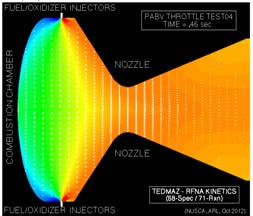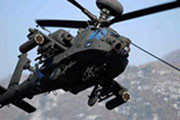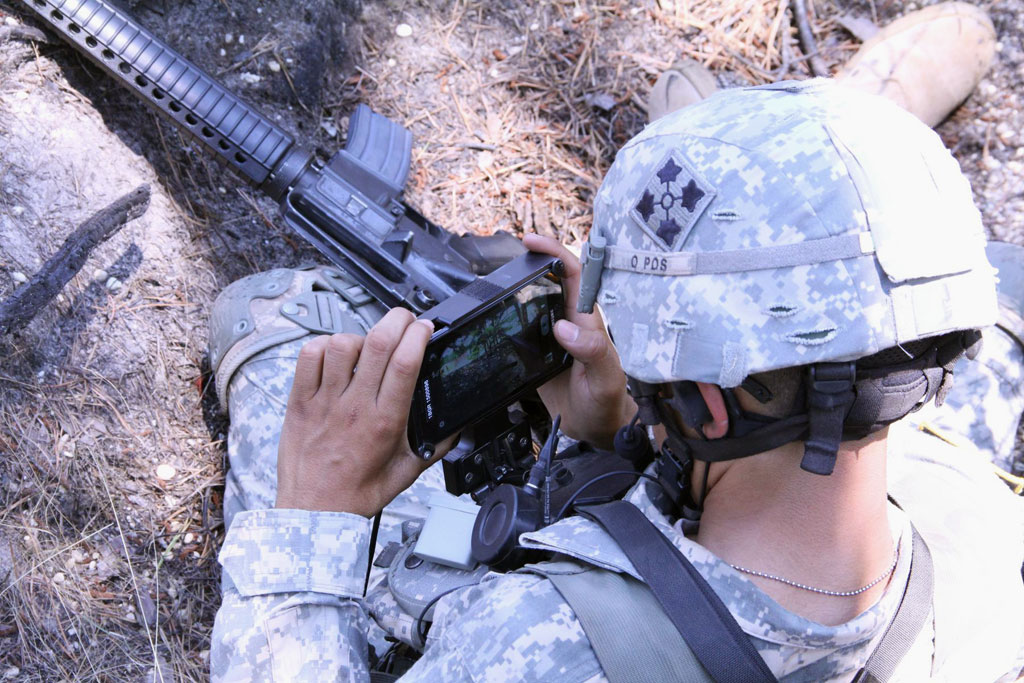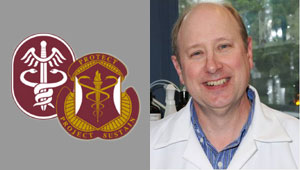
By T’Jae Gibson, Army Research Laboratory, Public Affairs Office Army researchers are building a portable drug detector that, soon, could help military and civil law enforcement agencies throughout the…

By T’Jae Gibson, Army Research Laboratory, Public Affairs Office Army researchers are building a portable drug detector that, soon, could help military and civil law enforcement agencies throughout the…

By Kathryn Bailey ABERDEEN PROVING GROUND, Md. –One of the first technologies to transition acetate map information into a digitized format for information-sharing in Iraq and Afghanistan is now…

By USAMRMC Public Affairs FORT DETRICK, Md. – The Armed Forces Institute of Regenerative Medicine (AFIRM): Warrior Restoration Consortium, under the Wake Forest University School of Medicine (Wake Forest…

By Heather R. Smith REDSTONE ARSENAL, Ala. — Army tactics and training are constantly changing to meet the threat on the battlefield, and one such example is the attack…

By Alexandra Foran, NSRDEC Public Affairs NATICK, Mass. (Sept. 17, 2013) — One of life’s greatest necessities, water, is a key ingredient for the new gentle motion retort used…

By Jason B. Cutshaw REDSTONE ARSENAL, Ala. – The U.S. Army Space and Missile Defense Command/Army Forces Strategic Command (USASMDC/ARSTRAT) is turning the old into the new, saving the…

By Margaret McBride WASHINGTON — The Army successfully completed the bulk of its migration to one of the Army’s highest priority IT initiatives, DOD Enterprise Email, at the end…

By T’Jae Gibson, Army Research Laboratory Public Affairs ABERDEEN PROVING GROUND, Md. — New technology being developed by research engineers at the U.S. Army Research Laboratory and Purdue University…

By Tracie Dean, U.S. Army Research Laboratory ABERDEEN PROVING GROUND, Md. (Aug. 5, 2013) — A team of Army researchers developed a new gel-propellant engine called the vortex engine….

By Amy Walker, PEO C3T ABERDEEN PROVING GROUND (July 29, 2013) — As the U.S. mission in Afghanistan changes and forces conduct more dispersed operations, new tactical communications equipment…

By Heather R. Smith REDSTONE ARSENAL, Ala. (July 19, 2013) — In the future, Army aircraft may be made of all composite materials, and the Prototype Integration Facility (PIF)…

By Edric Thompson ABERDEEN PROVING GROUND, Md. — The U.S. Army is harnessing the elements to help reduce casualties from sniper attacks on forward operating bases. The U.S. Army…

By Amy Walker ABERDEEN PROVING GROUND, Md. (June 12, 2013) — Taking advantage of lessons learned through several Network Integration Evaluation (NIE) cycles, the Army is fielding to its…

By Robert Karlsen and Bob Van Enkenvoort DETROIT ARSENAL, Mich. — A small car can’t pull a heavy trailer. Sports utility vehicles don’t have a compact car’s fuel efficiency….

By Evelyn Teats REDSTONE ARSENAL, Ala. — The U.S. Army Research, Development and Engineering Command’s (RDECOM) aviation and missile center is leveraging micro-electro-mechanical systems research in a new application…

By Sofia Bledsoe When Soldiers and aircraft deploy in any part of the world, air traffic control operations become one of the most important functions to ensure that all…

By Daniel Lafontaine ABERDEEN PROVING GROUND, Md. — U.S. Army engineers in Afghanistan recently designed and fabricated a tool to help Soldiers investigate possible improvised explosive devices from a…

By Claire Heininger FORT DRUM, N.Y. (April 22, 2013) — For Staff Sgt. Stephen Kovac, getting important information and instructions to the rest of his platoon was a struggle….

By Claire Heininger FORT DRUM, N.Y. (April 8, 2013) — As the 3rd Brigade Combat Team, 10th Mountain Division (Light Infantry) prepares for potential deployment with the Army’s new…

Claire Heininger, U.S. Army FORT BLISS, TEXAS — With two units now readying for Afghanistan with the Army’s new tactical communications network, the service will continue to drive technology…

Claire Heininger, U.S. Army FORT POLK, La. — When they deploy to Afghanistan this summer to assist in the drawdown of U.S. forces, the Soldiers of the 4th Brigade…

Katie Cain Army Acquisition leaders are implementing a new approach to equipment modernization—a comprehensive 30-year strategic planning process designed to harvest key lessons learned from more than a decade…

Ellen Crown The tongue is an amazing organ. Thousands of nerve fibers in it help us eat, drink and swallow. Without them, we would not taste. The tongue helps…

Kris Osborn WASHINGTON – As the Army matures its Agile Process, steps are being taken to align systems engineering and integration in an effort to project and synchronize trends…

Carey Phillips SGT Brendan Marrocco was the first service member during the Iraq War to survive a quadruple limb amputation, and now he’s the recipient of new arms, thanks…

Pfc. Andrew Ingram FORT CARSON, Colo. — Unmanned aerial vehicles soared through the sky under the control of 16 “Raider” Brigade Soldiers during QR-11 Raven training on Fort Carson,…

James Campbell WHITE SANDS MISSILE RANGE, N.M. — The largest solar power system in the U.S. Army is coming online at White Sands Missile Range, N.M., and officials gathered…

Sofia Bledsoe ARLINGTON, Va. — The world’s most advanced and lethal attack helicopter received a nickname by Team Apache at the annual government-industry Team Apache meeting at the Boeing…

Kris Osborn Army scientists, engineers, and program developers in a laboratory at Aberdeen Proving Grounds, Md. are making substantial progress with efforts to build and integrate a sophisticated battlefield…

Edric Thompson The Army employed a 4G cellular network this summer at its integrated capabilities testbed at Fort Dix, NJ to address integration with current network designs and to allow…

Edric Thompson The Army explored whether real-time, electronic point-of-treatment care was possible or practical this summer at its integrated capabilities test bed at Fort Dix, NJ. Key medical and technical…
Dr. Scott Fish This is the final column by Dr. Scott Fish, Army Chief Scientist, on activities in the Army science and technology (S&T) community and their potential impact on…

In support of Presidential Executive Order 13625, Improving Access to Mental Health Services for Veterans, Service Members, and Military Families, signed Aug. 31, DOD and the U.S. Department of Veterans…

Dr. Scott Fish This is a regular column by Dr. Scott Fish, Army Chief Scientist, on activities in the Army science and technology (S&T) community and their potential impact on…

Dr. Gary R. Matyas of the Walter Reed Army Institute of Research (WRAIR) has been selected as the 2012 recipient of the National Institute on Drug Abuse (NIDA) Avant-Garde Award…

Mary Ottman The Army’s Unmanned Systems Airspace Integration Product Directorate, one of eight offices within the Unmanned Aircraft Systems (UAS) Project Office of Program Executive Office (PEO) Aviation, has conducted…